Review NAS for small and medium businesses the QNAP TDS-16489U
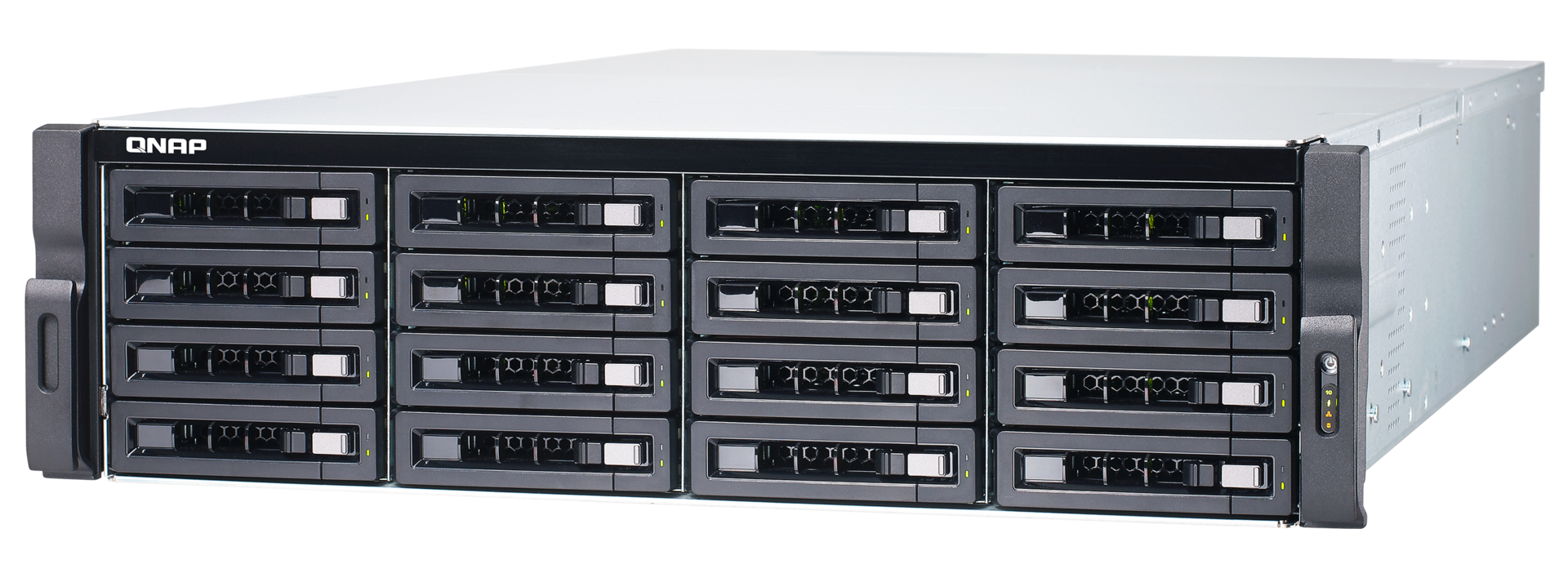
The Russian representation of company QNAP has provided me to review your NAS system TDS-16489U-SB3, which is positioned as a solution for small and medium businesses. Today I will talk about it, their applicability in small companies, as well as talk about the operating systems QTS.
TDS-16489U contains only one controller, allows you to install both SAS and SATA drives, and SSD, and operated by classic QTS that you could meet in their home NAS from QNAP. While hardware allows us to achieve high performance, and the operating system QTS allows to use it not only for data storage.
Specifications:
the
-
the
- form factor: Rackmount (3U) the
- CPU: 2 x Intel Xeon E5-2600 v3 (6 or 8 core configuration) the
- Memory: 256Gb (DDR4), can be expanded up to 1Tb (16 slots) the
- Flash memory: 512Mb the
- Discs:
-
the
- 16 x 3.5" SAS, SATA or 2.5" SAS/SATA SSD the
- 4 x 2.5" SAS/SATA SSD the
- 2 x mSATA
the - Maximum storage capacity: 160TB the
- Maximum capacity of the solution (when using expansion racks): 1440TB the
- Network interfaces:
-
the
- 4 x SFP+ 10GbE ports the
- 2 x RJ-45 1GbE ports
the - of Slots/expansion ports:
-
the
- 4 x PCle: 3 x PCIe Gen3 x8 1 PCIe Gen3 x16 the
- 4 x USB 3.0 the
- 1 x VGA
the - Power: 2 x 650 W the
- Power:
-
the
- In sleep mode: 255 watts the
- In: 363 W
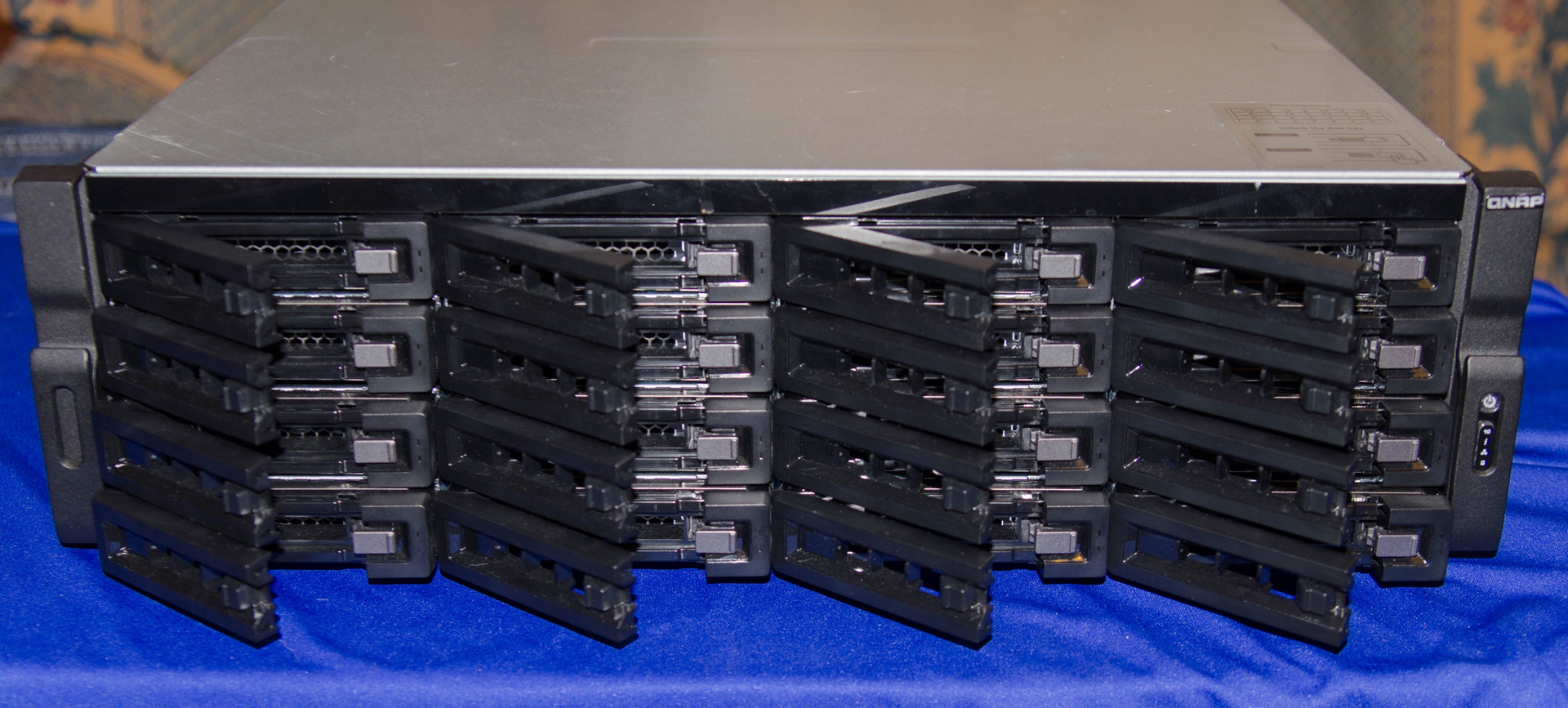
16 bays 3.5" SAS/SATA. Screwless mounting of the drives listed here
Looking at the specifications, we can say that the system is extremely versatile and can be integrated into any existing network. Unfortunately, compatibility list no FC cards, so you'll have to be limited to only LAN. But the system can be expanded with 40/56GbE network adapters installed in PCIe slots. Also, these slots can be used to install a PCIe SSD that can be used as a cache (though in compatibility list appear only Intel DC P3700). With the help of technology Qtier you can organize a multilevel data storage.

You should not also forget that QTS is based on Linux, so it can manage disk resources, but also to support third-party software and hardware. Thanks to this system it is possible to extend the web cameras for the video, sound card, 3/4G modems, etc. Installed Intel Xeon E5-2600 v3 will be enough to solve a huge range of tasks.

TDS-16489U equipped with three SAS controllers LSI production
But do not be afraid that the system is based on Linux, if you are a trained user. The system is no different from those installed in home models, respectively, the configuration of anything comes down to pressing a few buttons and entering a few parameters that should not cause any problems.
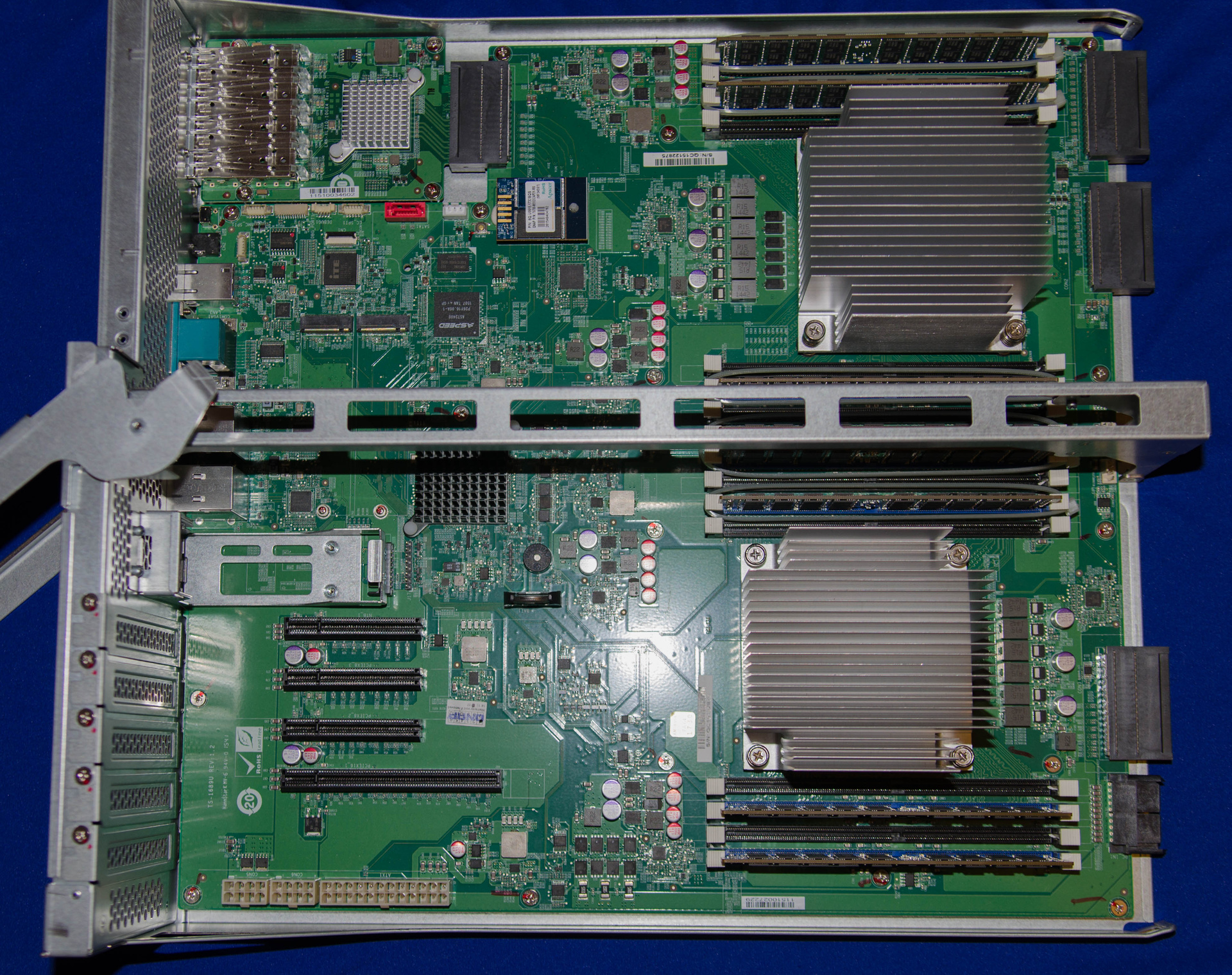
the controller is comfortable removed the rear, along with connected wires, no need to ReWire when installing expansion boards
As for the software — the selection here is much wider. In addition to the standard repositories, which will make the device not only universal storage block, file and object access, many companies release their products under QNAP (for example, backup software — Nakivo Backup & Replication). But do not forget that the system uses high-performance processors and a large amount of RAM, and this allows us to handle more and something more useful. During the testing I haven't seen CPU usage over 3% when I used NAS as the storage system, so additional software for virtualization and containerization (Docker/LXC) looks very interesting.
Monitoring performance

the Running container in ContainerStation

the List of virtual machines in VirtualizationStation3
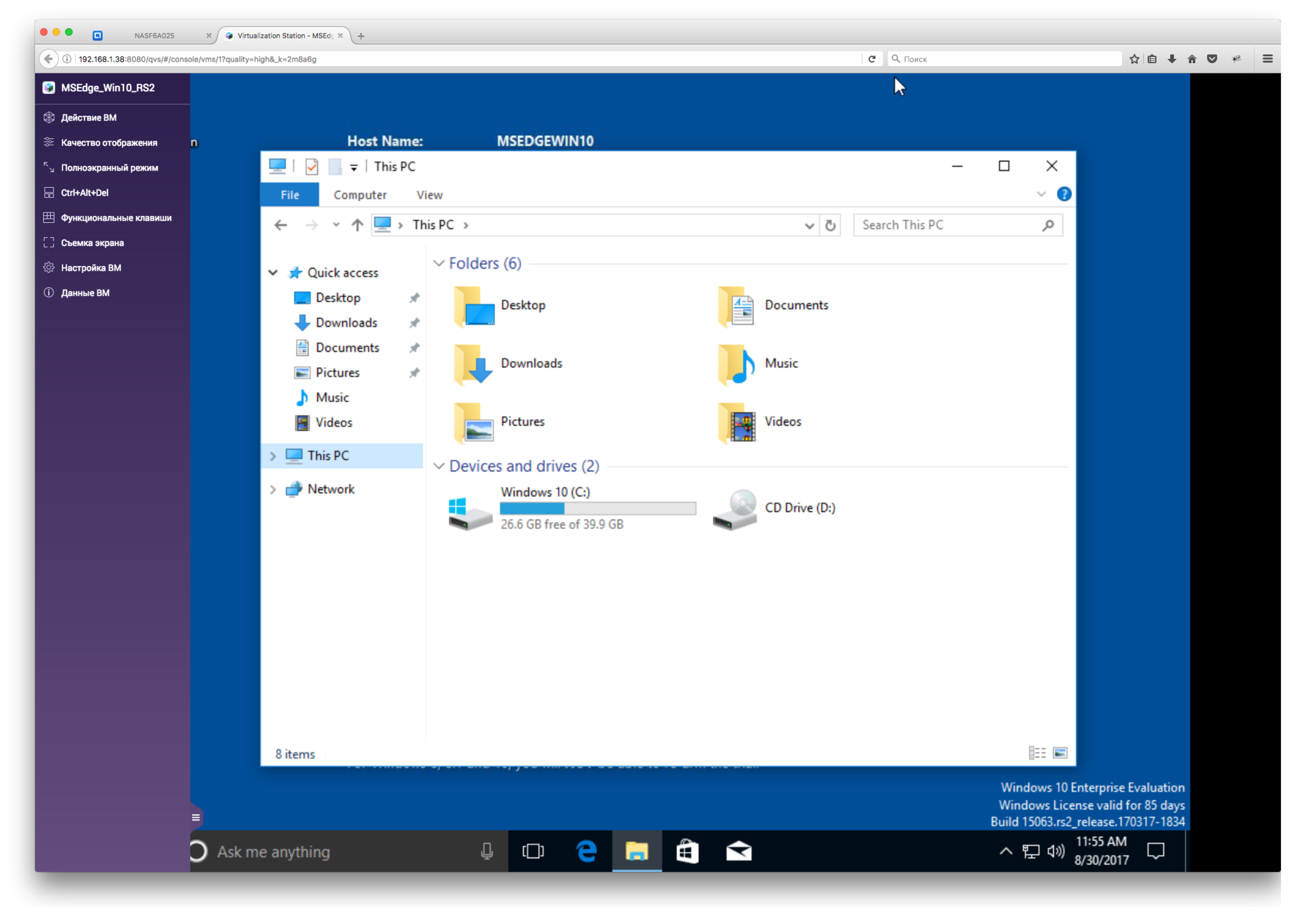
Running Windows 10. Does not require Java
This model is positioned as a "dual server": server storage and virtualization in one box. Someone is on the way of separation of these entities, and someone on the contrary. Typically, these budget decisions are based on the younger models of servers that allow you to set many disks. QNAP went on the reverse, suggesting that is a disk array, with the ability to run virtual machines/containers. This is not surprising, because every year the performance of processors is increasing more and more, the price falls, but not all tasks, store data able to utilize these resources. It is therefore logical to use them for some other tasks, and virtualization is just one of those tasks. Of course, given only one controller in the system, the question of failover is still open, but nevertheless, it could be used as a backup or test environment in order to utilize the available computing resources.
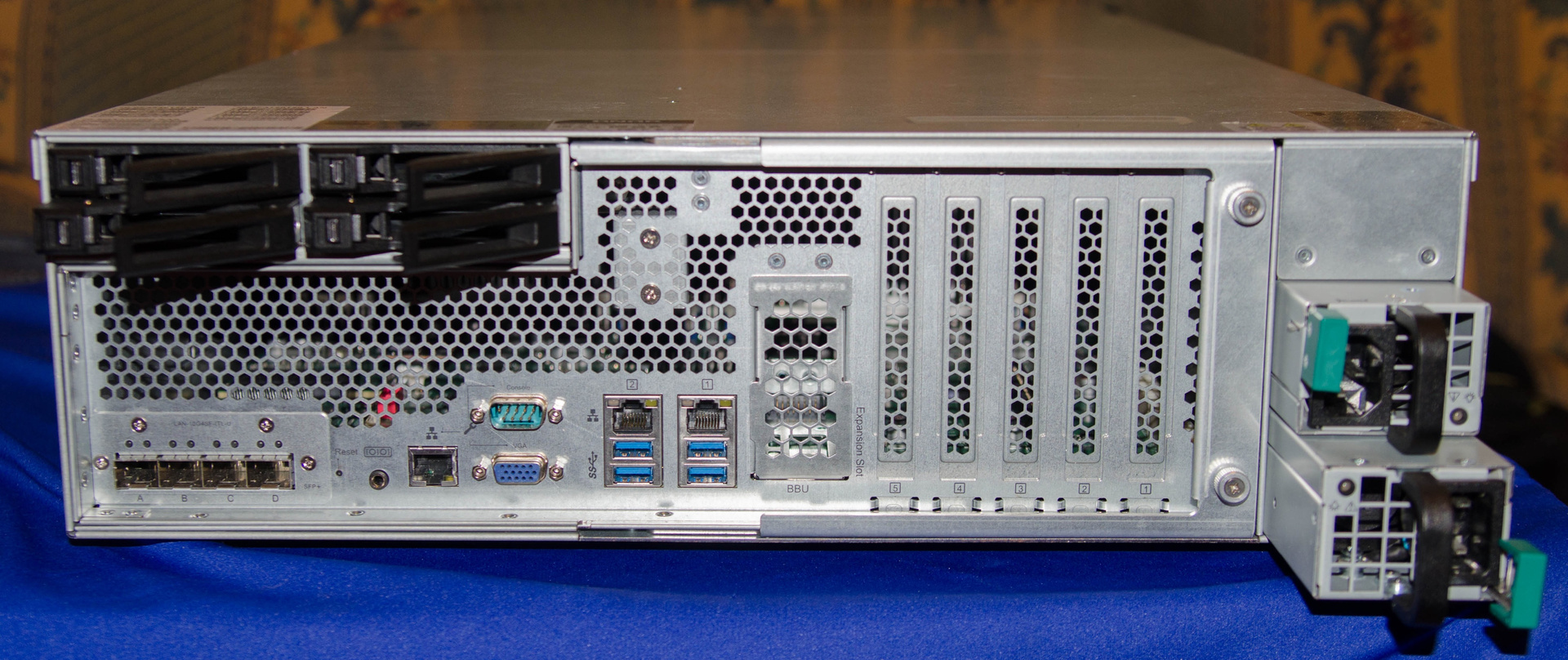
4 x 2.5" SSD, 4-port SFP+ IPMI, 4 USB 3.0 and 2 ports 1Gb/s, two power supplies
Fault tolerance aims to provide a standby system, synchronization with which you can organize on the system. Double-Take Availability allows you to provide high availability and data recovery.
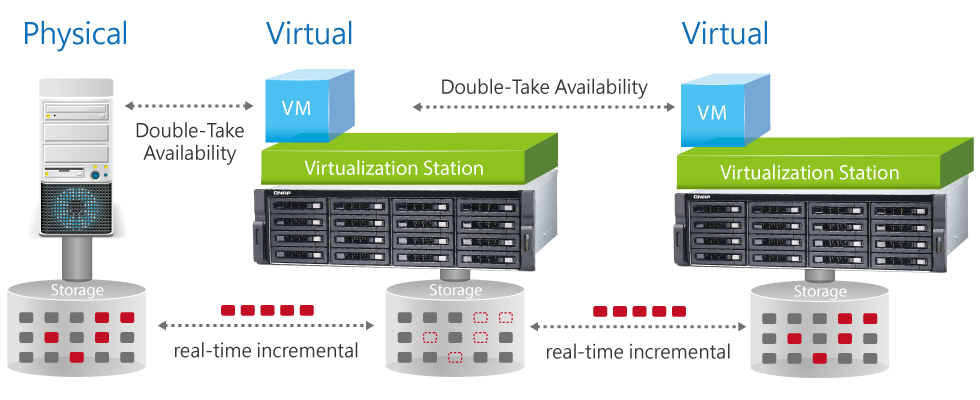
Built-in tools for backup and replication, including cloud services (Amazon S3, Dropbox, Google Drive, etc.), allows on the basis of one's decision to perform a full range of security and data recovery.
NAS is ideal for small and medium business: affordable 16 bays for 3.5" hard drives and four bays for 2.5" SSD, which allows to organize storage of the large volume and productivity. The presence of two high-performance processors and decent amount of RAM allow you to solve a wide range of tasks using a single device. The possibility of integrating the device as in 1 and 10Gb/s network makes the device extremely versatile and can be used in offices and "in mind". Operating system QNAP QTS allows you to control the device and add functionality by pressing just a couple keys, making configuration and maintenance extremely simple. Built-in backup options enhance the data reliability. Perhaps the only drawback I can think of only one controller in the system, but I assume that this restriction is imposed by the operating system, which came to corporate-owned devices from a home line. But the QNAP is and decontrolled solution built on the operating system QES, and promised soon to provide a system — ES1640dc v2. So, it is now possible to say — subscribe and stay tuned. I will make a detailed review of this solution and compare operating systems QTS and QES.
Комментарии
Отправить комментарий